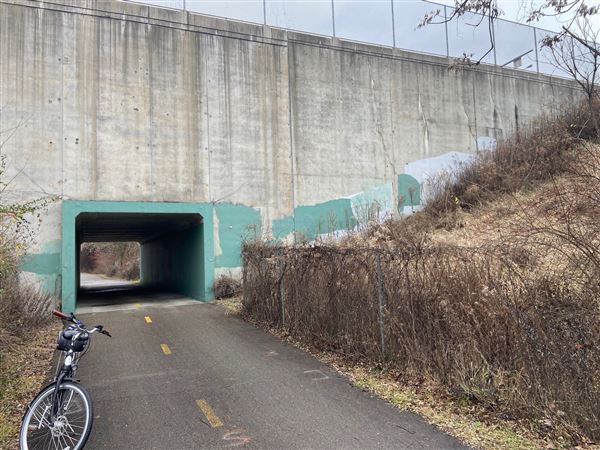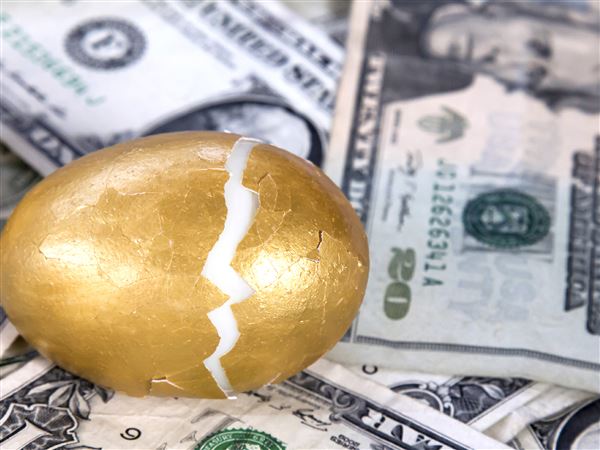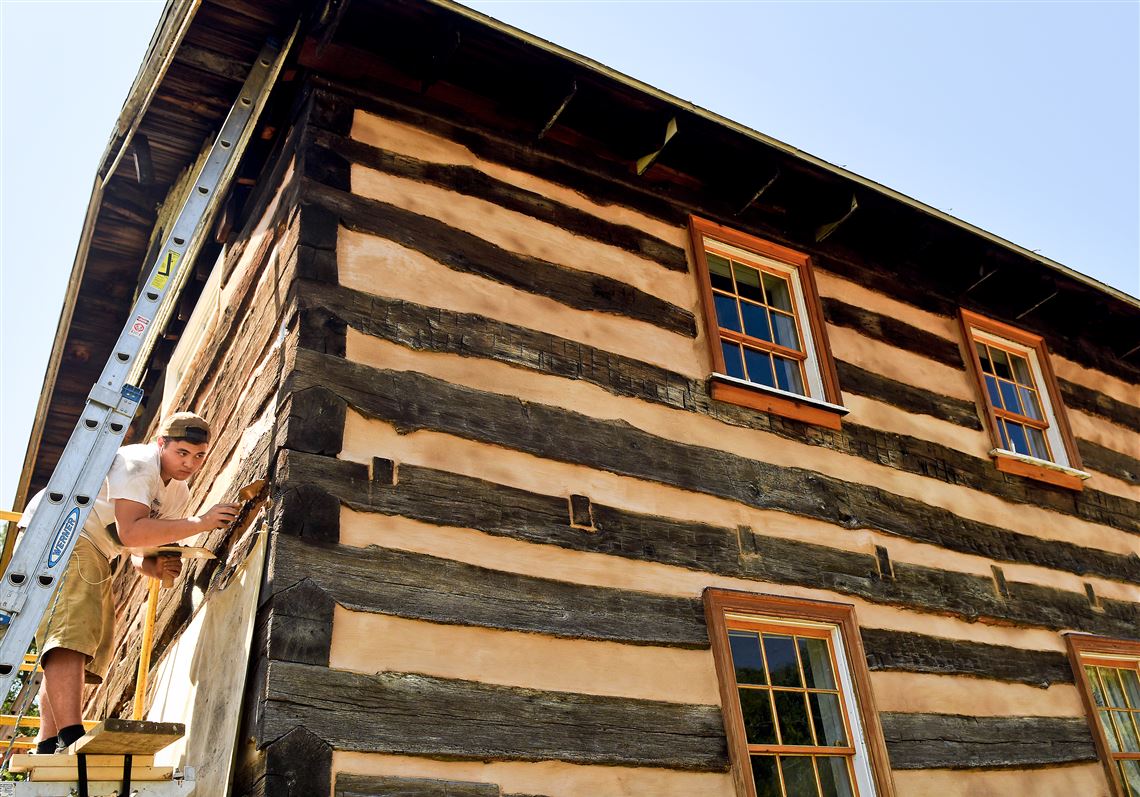The Greenock neighborhood of Elizabeth Township is offering a firsthand look at history being restored as a crew of experts works to preserve a log house that was built around the 1790s.
The Elizabeth Township Historical Society has launched a $100,000 fundraising campaign to transform the log house at 1215 Greenock-Buena Vista Road into a museum and community center.
The historical society purchased the log house in 2010 from Jeff Heinichen, who bought the property in 2007 and discovered the structure was a log house when he started to tear away two layers of clapboard siding.
“It was a lost gem that people did not know existed,” said Debbie Popp Gilbert, vice president of the society.
To publicize the three-phase transformation project, the society will host Greenock Log House Days from 11 a.m. to 6 p.m. Sept. 26 at the log house. The event will feature the 38th Pennsylvania Volunteer Infantry Civil War re-enactors and a spaghetti dinner hosted by the Lion’s Club at the adjacent Greenock Methodist Church.
“Fundraising and community support is critical for the chinking costs to be recouped,” Mrs. Gilbert said. Chinking is the mortar between the 10-inch logs which serves as insulation.
Part of the project’s first phase includes the chinking restoration at a cost of $18,000, the installation of two $3,000 doors made out of cherry wood and nine new pine-stained windows, each averaging $1,500 in cost. The work has been under the supervision and sweat of architectural restoration specialist Tom McGill of Bridgeville.
“Tom built the windows by hand just as they were in 1790 with the old wavy glass,” said Linda Bennett, chairman of the society’s board of directors.
Using a wire brush and chisel and wearing protective eye gear and a mask, Ms. Bennett has been carefully chipping away at the home’s inside layer of whitewash, uncovering the chinking that was mixed with horse hair, straw and coal dust from the 1790s.
“This was a rather wealthy home, being it was two stories and was whitewashed [downstairs],” she said.
The second phase of the project involves the interior restoration of the structure, which has a full attic and basement, along with construction of a porch that will be used as a staging area for musical and other presentations, Mrs. Gilbert said.
The third phase wil ilnclude an addition or “outbuilding” with handicapped-accessible restrooms or possibly a kitchenette.
Funding so far has come from the 20th Century Club of McKeesport, the McKeesport Confederation of Women’s Clubs and these foundations: Crawford, Peters, G.C. Murphy Co., Frew and Sandmeyer Steel.
To strip the house to its original design, Mr. McGill removed dilapidated plaster, 27 layers of wallpaper and interior walls that revealed original beams, outside log walls and pine floorboards.
Further deconstruction uncovered a fireplace with two openings, one used to heat a “parlor” area and another — hidden by kitchen cabinets — that was used for cooking. A third room downstairs was a small office, and a full oak enclosed staircase leads to three upstairs sleeping areas.
To keep repairs authentic to the late 18th century, Mr. McGill plans to use white logs from a dismantled log house in Scottdale, purchased for $7,500.
“No other log cabins that I know of [in southwestern Pennsylvania] are as large as this one. They are pretty much all from the same time period,” said Zachary McGill, Mr. McGill’s nephew who is assisting with the project.
Much about the house remains a mystery.
“We’re trying to figure out when the log house was built as well as who built it,” Mrs. Gilbert said.
One clue may be the name of local “dignitary” and landowner William Douglas that is written in red script on one of the logs.
“We do not believe he owned the house,” she said.
Deed research shows that Robert Wilson bought the land patent in 1788 when Pennsylvania and Virginia settled their title claims after the Revolutionary War. From the late 1800s to the 1940s, the home and its 1.13 acres were owned by farmers Andy and Dave Kelly.
“The Kellys divided the farm throughout the generations and what remained was this house,” Mrs. Gilbert said.
“When we find something that’s been there for 200 years, it deserves to be there, and the generations that live here deserve to have it here so that they can learn history and respect what occurred here,” Mrs. Gilbert said.
Details: 412-751-5389, www.betweentworivers.org.
Laurie Bailey, freelance writer: suburbanliving@post-gazette.com.
First Published: August 28, 2015, 4:00 a.m.















